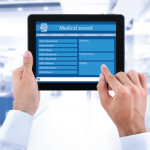Effective for dates of service on and after July 1, 2017, the National Government Services (NGS), the Medicare administrative contractor for Jurisdictions 6 and K, will require providers in their region to adhere to new evaluation and management (E/M) services expectations for the expanded problem-focused and detailed CPT examination components. The new requirement adds specificity to the number of areas or systems examined.
The current examination requirement:
- Expanded Problem Focused: 2–7 body areas or organ systems
- Detailed: 2–7 body areas or organ systems
As of July 1, 2017, the documentation requirements will be:
- Expanded Problem Focused: 2–5 body areas or organ systems
- Detailed: 6–7 body areas or organ systems
The NGS states that these changes were made due to numerous provider requests for clarification on the current examination requirements listed for these two levels of coding and hopes the new specificity on the exact number of body areas or organ systems to document will eliminate any and all confusion. Additionally, this coding update will bring the NGS into alignment with other CMS-sponsored review entities. The NGS serves Medicare providers in Jurisdiction 6 (Illinois, Minnesota, and Wisconsin) and Jurisdiction K (Connecticut, New York, Maine, Massachusetts, New Hampshire, Rhode Island, and Vermont).
The Most Difficult Question
The most difficult question in the exam area of the 1995 E/M guidelines has always centered on deciding between an expanded problem-focused exam, which requires a limited exam of the affected body area or organ system, and a detailed exam, which requires an extended exam of the affected body area or organ system. Where the differences fall is in what body area or organ system-specific information may be counted and having both levels cite the same numbers when reviewing the body areas or organ systems. The areas/organs can only be counted once, which has led to provider confusion on documentation requirements and coding selections, as well as a degree of subjectivity in reviewing medical records for these services.
Coding Guidelines
Providers should keep in mind that the extent of the exam should correspond to the nature of the presenting problem, the standard of care and the physician’s clinical judgment.
The levels of E/M services are based on four types of examination:
- Problem focused: A limited examination of the affected body area or organ system;
- Expanded problem focused: A limited examination of the affected body area or organ system and any other symptomatic or related body area(s) or organ system(s);
- Detailed: An extended examination of the affected body area(s) or organ system(s) and any other symptomatic or related body area(s) or organ system(s); and
- Comprehensive: A general multi-system examination or complete examination of a single organ system.
The documentation criteria for each type of exam differ, so it is important to look closely at the requirements for the specific exam type being used for any given patient encounter.
The ACR practice management department wants to ensure providers are reimbursed to the highest supported level. To do that, practices are encouraged to make it a standard to check both sets of E/M guidelines with their third-party payers and individual Medicare administrative contractor.
For More Information
For questions or additional information on coding, documentation guidelines or training, contact Melesia Tillman, CPC-I, CPC, CRHC, CHA, at [email protected] or 404-633-3777 x820.



